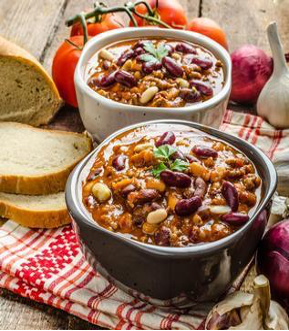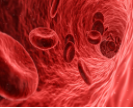Written by Dietetics Masters CP Student Isabella Gorski
Did you know that fewer than 10% of all Americans have a nutrient deficiency? That’s about 3 million people. A nutrient deficiency is what happens when your body does not get enough of a specific nutrient that it needs in order for you to be at your healthiest.
What are three nutrient deficiencies that can occur? According to the Centers for Disease Control and Prevention (CDC), the TOP 3 nutrient deficiencies are Vitamin B6, Iron, and Vitamin D1. Let’s investigate those, how your body uses the nutrient, how much you need, and some great food sources in the table below:
| Nutrient | Why does my body need it? | How much do I need? | What are some great sources? |
| Vitamin B6
|
* It helps to produce hemoglobin which is the protein in your red blood cells that carries oxygen to your body’s organs and tissues and transports carbon dioxide from your organs and tissues back to your lungs.
*It helps use and store energy from carbohydrates and protein in food
|
1.4 mg/day for men (ages 19-64)
1.2 mg/day for women (ages 19-64)
1.2 mg would be a medium sized banana, a glass of milk, and a medium sized sweet potato for dinner! |
* Fruit- bananas
* Protein- pork, chicken, turkey, fish, organ meats, peanuts * Dairy- milk * Starchy vegetables- sweet potatoes and regular potatoes
|
| Iron
|
* Helps make red blood cells which bring oxygen throughout the body
|
8.7mg/day men 18+ and women 50+
18 mg/day women 19-50
1 cup of oats, a cup of quinoa and a cup of lentils is about 13 mg! |
* Protein-liver, fish, red meat, nuts, beans- kidney, edamame, chickpeas
* Vegetables- spinach, broccoli, peas, sweet potatoes, mushrooms * Grains- quinoa, whole wheat fortified bread, fortified cereals like cream of wheat |
| Vitamin D
|
* Helps regulate the level of Calcium and Phosphate in the body
* You need Vitamin D to be able to absorb the Calcium that you eat
* Keeps bones, teeth and muscles healthy |
10 µgrams/day in the fall and winter
15 minutes a day in the sun allows your body to produce its own Vitamin D |
* Sunlight!!- In the summer you should be able to get all of your vitamin D from the sun, no supplements needed 🙂
* Protein-red meat, liver, egg yolks, fish- salmon, sardines, herring and mackerel * Fortified foods- like milk and cereal! * Vitamin D dietary supplements (These can be helpful in fall and winter when we don’t have much sunlight in the Northeast and spend more time inside) |
A good point to know: your body really appreciates nutrients it gets from food more than those it gets from vitamin pills!
Here is a super yummy and easy recipe that contains foods with a lot of these vitamins and minerals!!
Create Your Own Chili
Cost/Serving: $1.96 Yield: [4 servings] / Serving Size = 2 cups
 Ingredients:
Ingredients:
A basic recipe follows. See below for other options.
1 pound lean ground beef (15% fat or lower)
1 cup chopped onions
2 cloves garlic, diced or crushed
2 cups cooked kidney beans (or canned, rinsed and drained)
2 (15-ounce) cans unsalted diced tomatoes
2-3 Tablespoons chili powder
½ teaspoon cumin
Salt, to taste (up to ½ teaspoon)
Toppings, as desired
Directions:
- In a pot or large saucepan, brown beef over medium-high heat, breaking it into bite-sized pieces. Drain fat.
- Add onions and garlic and cook until softened.
- Add kidney beans, tomatoes, chili powder, cumin, and salt. Cook 30-60 minutes. Add water as chili cooks if you would like a thinner consistency.
- Serve hot, with your favorite chili toppings.
Options:
Meat: Use lean ground beef, chicken, turkey, or try a vegetarian version with no meat. Or use 1 package of Basic Meat Mix and start with step #2 or #3. Leave out the onions and garlic if the Basic Meat Mix already contains these.
Beans: Use any combination of kidney beans, pinto beans, black beans, lentils, etc.
Vegetables: Add 1 cup of vegetables, like frozen corn, chopped zucchini, chopped bell peppers, etc. Add a 15 ounce can of unsalted tomato sauce if you like chili saucier.
Seasonings: If you have made homemade Chili Seasoning Mix, substitute this for the chili powder, cumin, and salt. If the seasoning mix contains salt, leave out additional salt. Red pepper flakes are also an option.
Toppings: Common chili toppings are shredded cheese, low fat sour cream, tortilla chips, and hot sauce.
Montana State University’s Nutrition Website: https://buyeatlivebetter.org/recipes.html
Citations:
- NHS Choices, NHS, 3 Aug. 2020, www.nhs.uk/conditions/vitamins-and-minerals/iron/.
U.S. Centers for Disease Control and Prevention. Second National Report on Biochemical Indicators of Diet and Nutrition in the U.S. Population 2012. Atlanta (GA): National Center for Environmental Health; April 2012.
https://www.cdc.gov/nutritionreport/pdf/4page_%202nd%20nutrition%20report_508_032912.pdf
This material is funded by UDSA’s Supplemental Nutrition Assistance Program (SNAP).
This institution is an equal opportunity employer.


